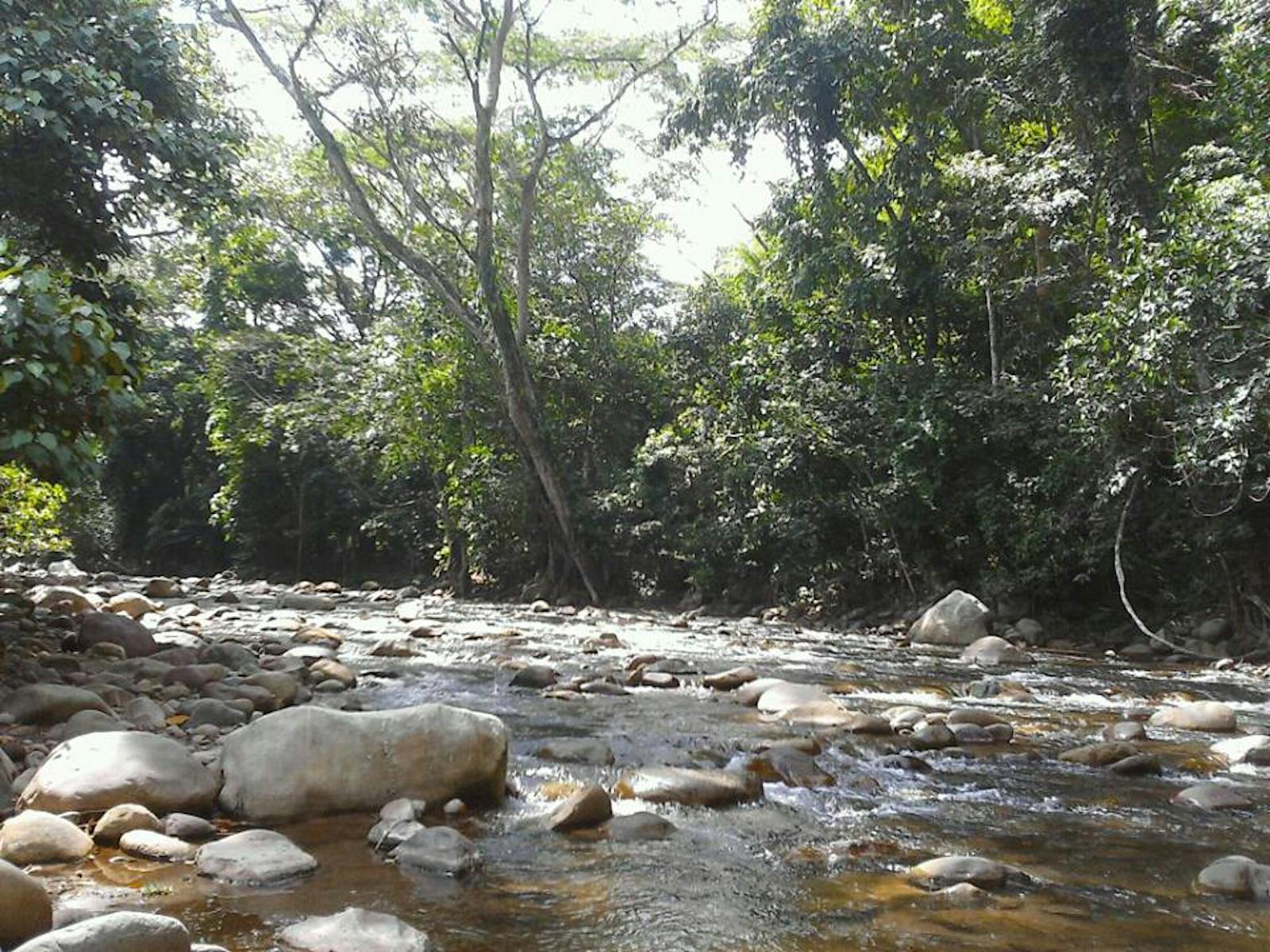Cordillera Oriental Montane Forests
The ecoregion’s land area is provided in units of 1,000 hectares. The conservation target is the Global Safety Net (GSN1) area for the given ecoregion. The protection level indicates the percentage of the GSN goal that is currently protected on a scale of 0-10. N/A means data is not available at this time.
Bioregion: Andean Mountain Forests & Valleys (NT11)
Realm: Southern America
Ecoregion Size (1000 ha):
6,802
Ecoregion ID:
457
Conservation Target:
74%
Protection Level:
4
States: Colombia, Venezuela
The Cordillera Oriental Montane Forests form an extensive ecoregion largely from mid to high level elevations of the Northern Andes. The unique elevations of these montane forests result in distinct flora and fauna, including the endangered Colombian lightbulb lizard. This lizard survived high in the mountains where the habitat can be cold and wet most of the time. It can be found in leaf litter in montane forests, or under logs or other “hiding places” in more open habitats including human-modified areas. This lightbulb lizard has a very small distribution range, and belongs to the genus Riama, members of which are known to have iridescent scales; they resemble in appearance and habits more to a salamander.
These forests span the eastern slopes of the Andean Cordillera Oriental from their northernmost point southwards through most of Colombia. With a significant change in latitude from north to south, this ecoregion has three major sub-regions, the Perijá Mountains, the northeastern slope of the Eastern Andes, and the southeastern slope. The eastern slope is situated between the Tamá Massif at the border between Colombia and Venezuela and the Serranía de La Macarena.
For approximately 300 km this ecoregion’s southern portion is narrow and lies below 3,000 m in elevation. As it widens further north, it contains zones of high, flat plains and extensive treeless areas, with some snow-covered peaks. The vegetation varies between premontane moist forest, montane forest proper, subalpine moist forest, and, in some drier pockets, premontane dry forest.
Species richness in this ecoregion is outstanding, both at the regional and global level, due to high turnover rates in species composition, high elevation variability of habitats, and a convergence of species from surrounding ecoregions. Current inventories for this ecoregion include 878 species of birds (18 endemic), over 165 species of frogs (32 endemic), and 63 species of palms (5 endemic). Notable species include the Andean condor and the spectacled bear.
The difference in species composition between the northeastern and southeastern slope depends on the taxonomic group studied. For example, while species composition of birds and certain plant groups (Arecaceae, Meliaceae) are highly similar in these two sub-ecoregions, there are few species of frogs and butterflies shared among them.
.jpg)
The flagship species of the Cordillera Oriental Montane Forests ecoregion is the Colombian lightbulb lizard. Image credit: Lauratbon, Creative Commons
In Colombia, 60% of the original ecosystems of the ecoregion have been altered. In the montane forests of the Macarena Mountains around 17% of the area has been modified and approximately 60% has been completely converted. In Venezuela, the degree of habitat loss is unknown but thought to be relatively limited. In the Colombian portion of the ecoregion, Natural Catatumbo Barí National Park covers 821 km2, while various indigenous territories cover another 1,746 km2. In Venezuela, Perijá National Park covers 3,000 km2 and there is a proposal to declare this zone a biosphere reserve. A recent cooperation initiative between Colombian and
Venezuelan governments for the enhancement of the trans-frontier parks and the creation of transnational protected areas has begun.
Logging, agriculture, and extensive ranching activities have led to extensive habitat fragmentation, while hydroelectric projects and road infrastructure that are being developed in some areas continue to threaten the ecoregion. In Venezuela, livestock grazing and mining are continuing causes of habitat destruction and fragmentation. In the Amazonian foothills and the Macarena Mountains, the expansion of human settlement brings in threats of subsistence agriculture and extensive grazing.
Migrations and settlement caused by political conflict, armed conflicts, border restrictions, and the world markets for illegal drugs are relatively new threats to biodiversity conservation in the ecoregion. Forest clearing for crops through burning and chemical herbicides are among the main causes of habitat disturbance throughout these mountain ecosystems.
The priority conservation actions for the next decade will be to: 1) provide environmental education for locals to integrate natural resource management in agriculture and cattle ranching; 2) provide financial incentives for environmentally friendly farming and/or ecotourism schemes to discourage illicit crop farming; and 3) create connectivity corridors to reverse habitat fragmentation and join parks between Venezuela and Colombia.
Citations
1. Naranjo, L. 2018. Northern South America: Central Colombia and northeastern Venezuela https://www.worldwildlife.org/ecoregions/nt0118 Accessed July 9, 2018.
2. Kattan, G. 2000. Patrones ecorregionales de diversidad en los Andes del Norte. WWF-COP, Informe Técnico de consultoría.
3. Ruiz, P. M., M. C. Ardila and J. D. Lynch 1996. Lista actualizada de la fauna de Amphibia de Colombia. Revista de la Academia Colombiana de Ciencias 20:365-415.
4. Corrales, E. 2000. Andes del Norte: Principales Tendencias Socioeconómicas y su Relación con la Biodiversidad. WWF-COP, Informe Técnico de consultoría.



